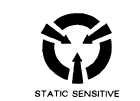|
| |
TM 11-5820-890-30-5
Section Ill. TROUBLESHOOTING PROCEDURES
Subject
Para
Page
General . . . . . . . . . . . . . . . . . . . . . . . . . . . . . . . . . . . . . . . . . . . . . . . . . . . . . . . . . . . . . . . . . . . 15-9
15-3
Test Precautions and Notes . . . . . . . . . . . . . . . . . . . . . . . . . . . . . . . . . . . . . . . . . . . . . . . . . 15-10
15-3
Operational Check . . . . . . . . . . . . . . . . . . . . . . . . . . . . . . . . . . . . . . . . . . . . . . . . . . . . . . . . . 15-11
15-3
Troubleshooting . . . . . . . . . . . . . . . . . . . . . . . . . . . . . . . . . . . . . . . . . . . . . . . . . . . . . . . . . . . 15-12
15-6
Explanation of Symbols and Notes . . . . . . . . . . . . . . . . . . . . . . . . . . . . . . . . . . . . . . . . . . . . 15-13
15-7
Troubleshooting Flowcharts . . . . . . . . . . . . . . . . . . . . . . . . . . . . . . . . . . . . . . . . . . . . . . . . . . 15-14
15-7
15-9. GENERAL.
This section provides the troubleshooting procedures used to isolate a defective module within the battery tray.
The troubleshooting information is presented in the form of flowcharts. They systematically get from a symptom
to the bad module.
15-10. TEST PRECAUTIONS AND NOTES.
Set the test power supply to OFF before connecting or disconnecting a test setup. Current
capacities are large enough to cause personal injury. Equipment can also be damaged if care is
not taken.
CAUTION
Static electricity and stray voltages can damage the battery tray. Use an antistatic pad on the
work surface and wear a grounded wrist strap when troubleshooting or handling the modules.
NOTE
The Principles of Operation section, functional block diagrams, and schematic diagram, figure
FO-29, can be used to help fault isolate any unusual problems that might not recovered in the
troubleshooting procedures.
15-11. OPERATIONAL CHECK.
The operational check provides a step-by-step procedure for evaluating a battery tray. If the operational check is
passed, the battery tray can be returned to service. If it does not, the bad module or the troubleshooting chart to
be used will be identified. The troubleshooting procedures are in paragraph 15-12.
The operational check is divided into steps. Each step verifies a particular function. Follow the instruction in the
“Action” column. Check the response. If the response is correct, proceed with the next lettered step. When a
Step has been completed, proceed with the next Step. A “No response” in the “Response” column means that
any response is not of interest.
The switch settings for the test equipment are given in the “EQUIPMENT PRESETS” section of the test setup
figure. Set the test equipment switches to the indicated presets and then verify the settings. If a test response is
incorrect, check the equipment settings and the test adapter cabling before going to a troubleshooting chart or
replacing a bad module.
Connect equipment as shown in figure 15-1 to perform the operational check of the battery tray.
15-3
|



